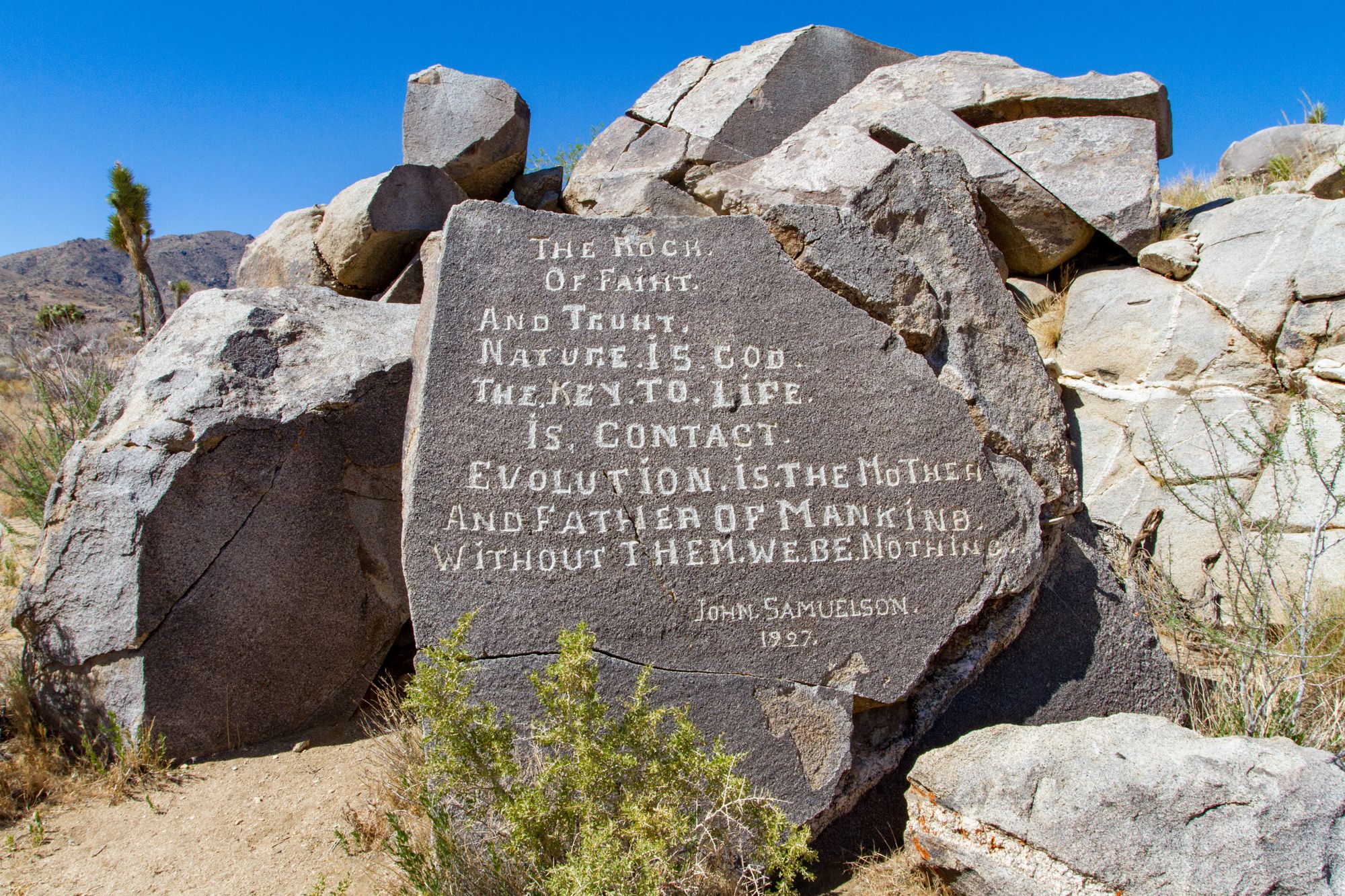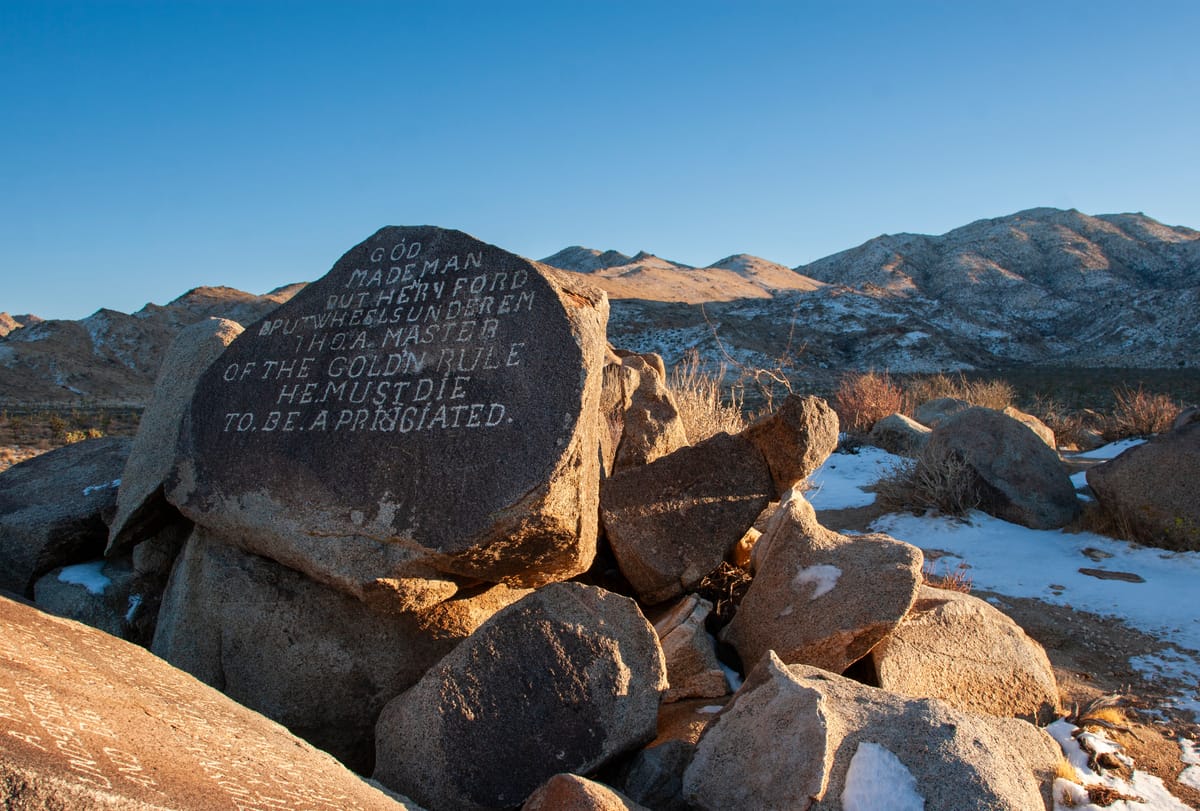This isolated rock outcrop known as Samuelson’s Rocks was once the homestead of Johann (or John) Samuelson, a Swedish immigrant who arrived around 1926. He must have had some time on his hands because some of the boulders here have 1930's Depression-era political and naturalistic commentary. Search around the boulder pile, as there are quite a few inscriptions. See how many you can find; I counted seven. It must have taken some time (and dedication) to carve his beliefs on these rocks.
One of them reads:
The Rock. Of Faiht. And Truht. Nature is God. The Key to Life is Contact. Evolution is the Mother and Father of Mankind. Without them we be nothing. – John Samuelson. 1927.

Another is:
The milk of human kindness ain’t got thick cream on it for all of us. Ask Hoover.
Being from Sweden, I’m guessing English wasn’t Mr. Samuelson’s first language. Many of the inscriptions have spelling errors, but keep in mind that dictionaries were scarce in remote mining districts at the time.
How Samuelson got to Joshua Tree remains a bit of a mystery. Some stories suggest he was a sailor, but I couldn’t find enough evidence to confirm that. Samuelson did work for Bill Keys at the Desert Queen Mine in 1928. By the 1930s, he was working at the Hidden Gold Mine below Keys View.



